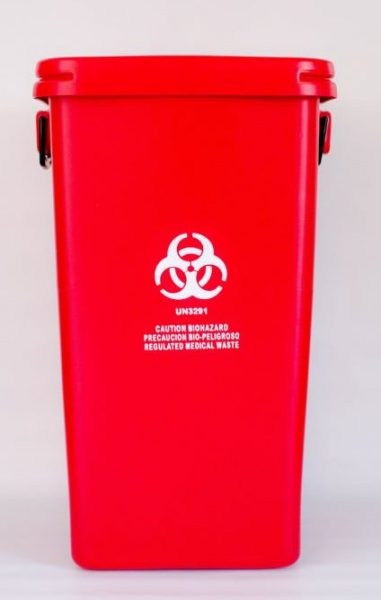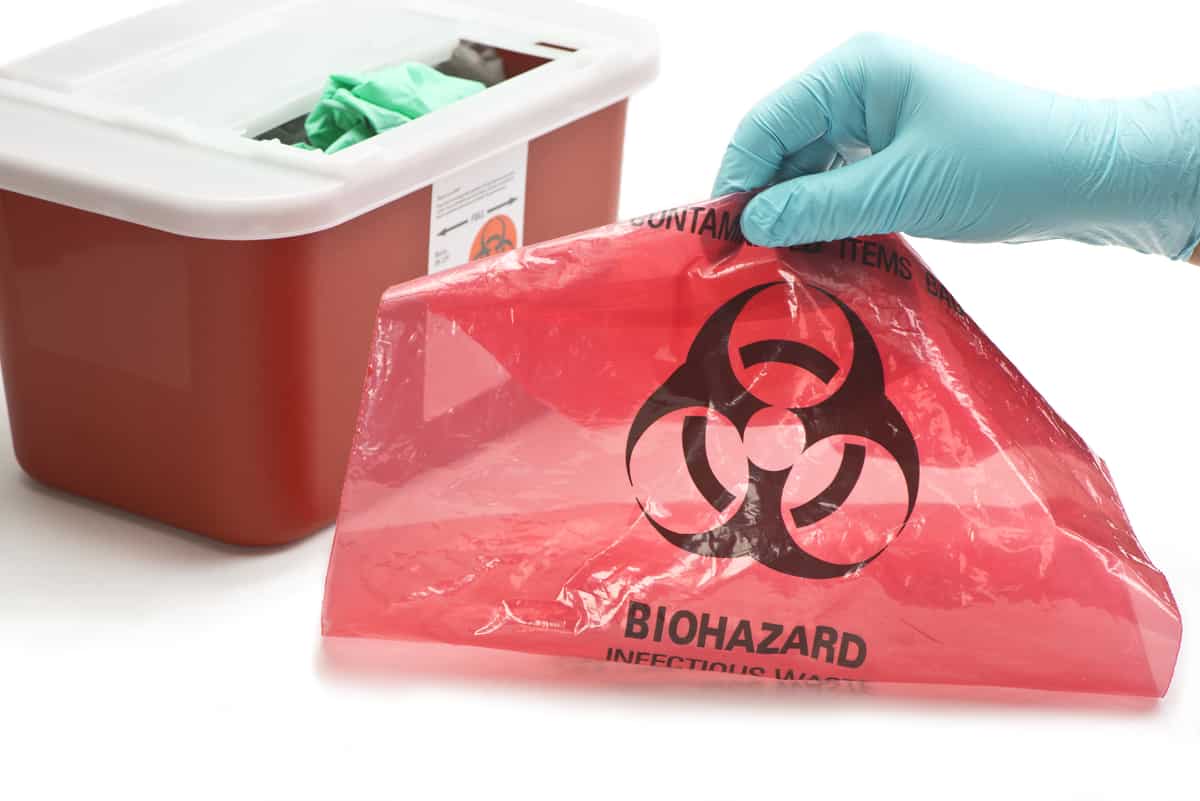Past Cleaning: Ensuring Safety And Security with Professional Medical Waste Removal
Past Cleaning: Ensuring Safety And Security with Professional Medical Waste Removal
Blog Article
The Value of Appropriate Medical Garbage Disposal: An Overview for Health Care Facilities
Proper medical waste disposal is a crucial element of healthcare facility management, making sure the safety and security and well-being of clients, personnel, and the atmosphere. From recognizing the various groups of clinical waste to complying with regulatory demands, health care facilities should embrace efficient waste segregation methods and select suitable disposal techniques.
Comprehending Medical Waste Categories
Understanding medical waste categories is essential for appropriate disposal in healthcare facilities. Medical waste is a wide term that incorporates various kinds of waste created in medical care setups, such as medical facilities, labs, and centers. Classifying clinical waste aids make sure that it is dealt with, saved, and disposed of securely and based on relevant guidelines.
There are a number of categories of clinical waste that healthcare centers need to be mindful of. These classifications include transmittable waste, sharps waste, pharmaceutical waste, chemical waste, and radioactive waste (medical waste disposal services with WasteX). Each category has certain characteristics and requires different disposal techniques to lessen the threat of injury to medical care employees, patients, and the environment
Contagious waste, as an example, describes throw away contaminated with potentially infectious materials, such as blood, body fluids, and tissues. Sharps waste includes needles, syringes, and other sharp objects that can cause injury or transmit infections. Pharmaceutical waste consists of expired or extra drugs, while chemical waste includes hazardous chemicals used in medical treatments. Finally, contaminated waste includes products contaminated with contaminated materials, such as nuclear medication products.
Compliance With Regulatory Requirements
Healthcare centers need to make sure compliance with governing demands for proper medical garbage disposal. Regulatory bodies, such as the Epa (EPA) and the Occupational Security and Health Management (OSHA), have actually established regulations and standards to secure public health and the setting. These policies outline the correct handling, storage, transportation, and disposal of medical waste.
Compliance with regulative needs is important for health care facilities to prevent legal fines, reputational damages, and prospective harm to human health and wellness and the environment. Failing to comply with these laws can lead to penalties, suits, and also the suspension or cancellation of operating licenses.
To make sure compliance, health care centers ought to develop extensive waste monitoring programs that include personnel training, correct waste segregation, and the usage of suitable containers and tags. Regular audits and assessments should likewise be performed to identify any type of non-compliance concerns and address them quickly.
It is important for health care facilities to keep up to day with adjustments in policies and upgrade their waste monitoring techniques accordingly. This can be accomplished by proactively monitoring updates from regulatory bodies and joining training programs and workshops.
Applying Effective Waste Partition Practices
To make certain proper clinical garbage disposal, medical care centers must carry out efficient waste partition techniques. Waste segregation is a vital action in the total waste monitoring procedure, as it aids decrease the threat of infection, protects against cross-contamination, and makes certain the safe disposal of various sorts of waste. Reliable waste partition methods include separating medical waste into different groups based on its features and prospective risks.
One common technique is the partition of sharps waste, such as scalpels and needles, from various other types of clinical waste. Sharps waste ought to be put in puncture-resistant containers to protect against injuries and potential infections. In addition, unsafe waste, such as chemicals and drugs, need to be divided from basic medical waste to prevent environmental contamination.
Proper labeling and color-coding of waste containers are essential for efficient waste segregation. Clear and visible tags should be placed on each container to indicate the type of waste it has and any type of unique handling demands - medical waste disposal services with WasteX. In addition, color-coding can be utilized to distinguish between various waste groups, making it less complicated for medical care personnel to determine and dispose of waste properly
Regular training and education and learning for healthcare personnel is critical for the successful execution of waste partition methods. Employee need to be enlightened on the different waste classifications, appropriate segregation strategies, and the relevance of complying with waste management methods. This will aid guarantee compliance and consistency in waste partition like this techniques throughout the center.
Deciding On Appropriate Disposal Methods
Correct choice of suitable disposal approaches is important in making sure the risk-free and environmentally responsible administration of clinical waste in medical care centers. Healthcare centers generate a selection of medical waste, consisting of sharps, transmittable waste, pharmaceutical waste, and chemical waste - medical waste removal service. Each kind of waste calls for details disposal approaches to lessen the threat of contamination, injury, and environmental damage
One typical disposal approach for clinical waste is incineration. Incineration involves the regulated burning of waste at high temperatures.

Chemical disinfection is an additional technique utilized for sure sorts of clinical waste, such as pharmaceutical waste. This method utilizes chemicals to neutralize or ruin impurities. It is important to select chemicals that are eco friendly and risk-free.
Sometimes, landfill disposal may be appropriate for non-hazardous clinical waste (medical waste disposal services with WasteX). Nevertheless, appropriate segregation and packaging are essential to avoid leakage or contamination.
Eventually, healthcare facilities have to carefully review the features of their medical waste and select ideal disposal approaches that prioritize safety, environmental management, and regulatory conformity. Routine training and monitoring are important to make sure that health care staff adheres to appropriate disposal methods.

Training and Educating Personnel on Correct Disposal Treatments
Personnel education and training play a crucial duty in guaranteeing the correct disposal of medical waste in healthcare centers. It is important that all employee, consisting of physicians, registered nurses, specialists, and assistance personnel, obtain extensive training on correct disposal procedures. This training needs to cover the different kinds of clinical waste, their prospective threats, and the suitable techniques for handling, segregating, and dealing with them.
Among the primary goals of personnel education and learning and training is to guarantee that all health care professionals understand the value of proper disposal procedures and the prospective effects of inappropriate waste management. They require to be knowledgeable about the risks connected with clinical waste, such as the transmission of infections and the contamination of the setting. medical waste removal service. By comprehending these threats, personnel will be much more inspired to adhere to correct disposal protocols and take the necessary safety measures to secure themselves, their coworkers, and the community
Training ought to likewise cover using personal protective equipment (PPE) and the proper techniques for dealing with medical waste. Team participants need to be educated on just how to recognize and set apart various sorts of waste, such as sharps, contagious waste, and dangerous chemicals. They ought to also be trained on the correct usage of waste containers, such as sharps containers and biohazard bags, along with the value of labeling and securing these containers properly.
Furthermore, staff education and training need to consist of routine updates and correspondence course to make certain that health care experts stay educated regarding the most current guidelines and best techniques in clinical waste disposal. This recurring education and learning is vital to preserve a high degree of recognition and compliance amongst personnel.
Verdict
In final thought, correct clinical waste disposal is of utmost importance for health care centers. Recognizing the different categories of medical waste and conforming with governing needs ensures the security and wellness of both health care employees and the basic public.
From comprehending the different classifications of clinical waste to complying with governing requirements, health care centers need to embrace reliable waste segregation practices and choose ideal disposal methods. These classifications consist of infectious waste, sharps waste, pharmaceutical waste, chemical waste, and contaminated waste.To guarantee appropriate clinical waste disposal, healthcare facilities need to apply effective waste segregation methods. Waste partition is a crucial step in the general waste monitoring procedure, as it helps reduce the danger of infection, stops cross-contamination, and makes certain the safe disposal of different types of waste. Health care facilities produce a range of clinical his response waste, consisting of sharps, transmittable waste, pharmaceutical waste, and chemical waste.
Report this page